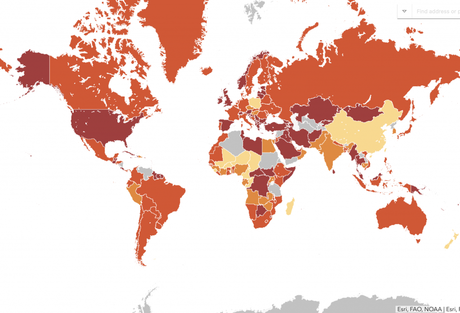It is difficult to overstate just how much of an impact the COVID-19 pandemic has had on the travel industry. When the virus began to spread in early 2020, lockdowns and travel restrictions were put into place in an attempt to limit the spread of the disease. Borders closed, airlines cancelled tens of thousands of flights, and even the most seasoned global explorers chose to stay close to home. As a result, the World Travel and Tourism Council estimates that more than $4.5 trillion was lost in the travel sector alone, creating challenges that will be felt for many years to come.
This year, those travel restrictions have eased some, creating some opportunities for travelers to satisfy their pent-up wanderlust. But the pandemic is far from over and smart travelers looking to stay safe should keep that in mind when booking a trip. To that end, both the U.S. and the U.K. recently updated their COVID travel lists, providing some insights into the destinations that remain challenging and those that are on the rebound.

CDC Adds Six Destinations to High Risk List
One of the most important COVID travel lists to keep an eye on is the one that is maintained by the Center for Disease Control. The CDC places every country in the world into one of four categories, with those listed on Level 1 as being "low risk", while those that are at Level 4 are deemed to be in the "very high" category.
As we've seen in recent months, this list is highly fluid, with status changes coming on a regular basis. As the Delta variant of the virus took hold, a number of countries were moved into the Level 3 and 4 category. But as vaccines have rolled out and lockdowns have taken hold, some countries have been downgraded as well, indicating that they are safer to visit than others.
Last week, the CDC elevated six new countries to its very high risk category. Those nations include Armenia, Austria, Barbados, Croatia, Latvia, and New Caledonia. Additionally, several other destinations were moved into the Level 3 category, which is still listed as "high" risk, but with declining infection rates. Those places include Argentina, France, Iceland, Lesotho, Morocco, Nepal, Portugal, and South Africa.
Also of note, Peru has dropped into the Level 2 category, as has the Caribbean island of Saint Barthelemy. That's good news planning a hike on the Inca Trail or a beach getaway.

U.K. Adjusts the 'Red List' Too
In the U.K., the equivalent to the CDC travel list is the so-called " red list." It serves much the same purpose, but with an obvious slant towards travelers coming and going from Britain. Still, it does manage to provide some insights into travel trends from around the globe and what destinations are seeing decreasing numbers of COVID infections.
Recently, the government in the U.K. reduced the number of countries on its red list from 54 down to just 7. That's a pretty dramatic shift and a clear sign that things are starting to get back to some level of normality. It also means that British travelers will soon be able to visit more places without having to quarantine for ten days after their return home.
The seven countries that remain on the red list include: Panama, Colombia, Venezuela, Peru, Ecuador, Haiti, and the Dominican Republic. Officials are quick to point out however, that travelers could still face restrictions upon entry to their destination, meaning we should all be aware of the local rules upon arrival.
Uncertainty to Remain into 2022
While these adjustments to the COVID travel lists do provide a glimmer of hope for international travelers, officials still urge caution. There are many parts of the world where the pandemic is still running rampant and even those who are vaccinated can still contract the virus and spread it to others.
This is likely to make 2022 another challenging year in terms of planning and logistics. While more than few of us are anxious to resume our global wandering, the virus will continue to make life difficult. If you are hoping to travel abroad in the weeks and months to come, be sure to consult these COVID travel lists ahead of your departure. They will help you to understand the current risk levels and what to expect when entering and leaving a country.
Right now, the travel industry is cautiously optimistic that 2022 will bring a surge in business. But troubling COVID variants and a slow vaccine rollout could cause further setbacks. Hopefully that won't be the case however and we can all get back to enjoying exotic destinations once again.



